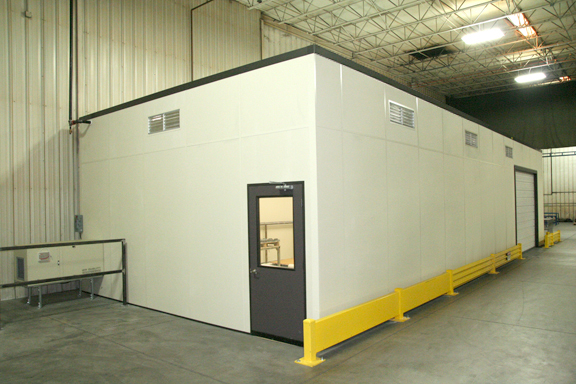
What Is An Inplant Building?
The new trend in industrial and commercial building is inplant buildings. While this may seem like just another trend, there are many reasons why an inplant building might be useful in your factory or industrial application. What are inplant buildings, and what are their benefits?
What is an inplant building?
Inplant are essentially a building inside of a building, specifically, a factory plant. It’s not just a room, though. An inplant building is more like a suite of rooms or a building itself, with freestanding walls, it’s own ceiling, etc., though it may incorporate some of the factory’s existing structures.
Inplant buildings can serve a lot of purposes, from creating office spaces to separating process flows and more. These inplant buildings are constructed modularly, which has a lot of benefits in terms of build time and cost.
What are the benefits of inplant buildings?
Some of the uses of inplant buildings are obvious: say you need some offices. You don’t want to set up desks and cubicles on the factory floor, next to your inspection area or where the forklifts are parked. An inplant building can solve this dilemma. If you have equipment that is loud and requires hearing protection, you can create an equipment enclosure to contain it and reduce noise to surrounding outside areas.
One benefit to inplant buildings is their modular construction. Modular construction can be less expensive than traditional construction. Additionally, it is quicker to assemble modularly constructed buildings, which saves you time and lost production time, which saves you even more money. Plus, modular construction depreciates faster than traditional construction, an added tax benefit.
Another benefit to modularly constructed inplant buildings is their flexibility. If you need a temporary office space for example, an inplant building can serve that purpose and be quickly and easily taken down when no longer needed. In fact, the modular components can all be reused for a new application. If you need to add onto a modular building, or change the layout in some way, modular construction offers that flexibility, since you can add new modules and reuse existing ones in new formations.
Because of their easy of assembly, you can even construct or modify your inplant buildings with your own personnel—no subcontractors required.
If you’re looking to create an inplant building, contact the design engineers at Angstrom Technology to see how modular construction can work for your situation, and be sure to check out our guide to Modular Offices and Inplant Buildings.

